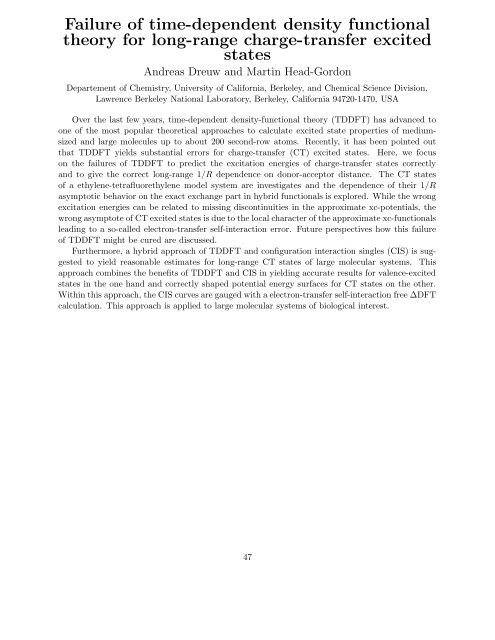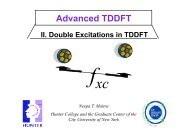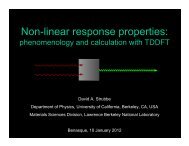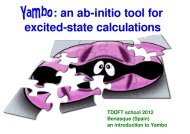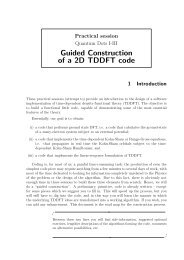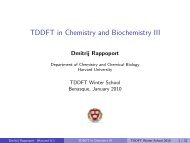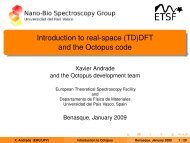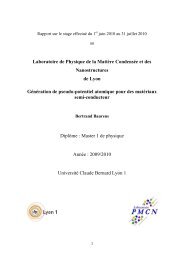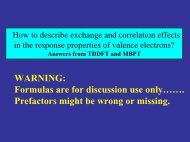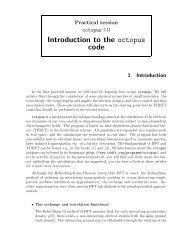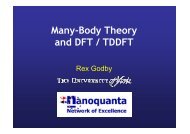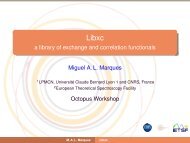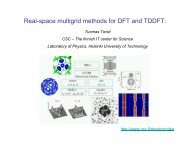TIME DEPENDENT DENSITY FUNCTIONAL THEORY ... - TDDFT.org
TIME DEPENDENT DENSITY FUNCTIONAL THEORY ... - TDDFT.org
TIME DEPENDENT DENSITY FUNCTIONAL THEORY ... - TDDFT.org
- No tags were found...
You also want an ePaper? Increase the reach of your titles
YUMPU automatically turns print PDFs into web optimized ePapers that Google loves.
Failure of time-dependent density functional<br />
theory for long-range charge-transfer excited<br />
states<br />
Andreas Dreuw and Martin Head-Gordon<br />
Departement of Chemistry, University of California, Berkeley, and Chemical Science Division,<br />
Lawrence Berkeley National Laboratory, Berkeley, California 94720-1470, USA<br />
Over the last few years, time-dependent density-functional theory (<strong>TDDFT</strong>) has advanced to<br />
one of the most popular theoretical approaches to calculate excited state properties of mediumsized<br />
and large molecules up to about 200 second-row atoms. Recently, it has been pointed out<br />
that <strong>TDDFT</strong> yields substantial errors for charge-transfer (CT) excited states. Here, we focus<br />
on the failures of <strong>TDDFT</strong> to predict the excitation energies of charge-transfer states correctly<br />
and to give the correct long-range 1/R dependence on donor-acceptor distance. The CT states<br />
of a ethylene-tetrafluorethylene model system are investigates and the dependence of their 1/R<br />
asymptotic behavior on the exact exchange part in hybrid functionals is explored. While the wrong<br />
excitation energies can be related to missing discontinuities in the approximate xc-potentials, the<br />
wrong asymptote of CT excited states is due to the local character of the approximate xc-functionals<br />
leading to a so-called electron-transfer self-interaction error. Future perspectives how this failure<br />
of <strong>TDDFT</strong> might be cured are discussed.<br />
Furthermore, a hybrid approach of <strong>TDDFT</strong> and configuration interaction singles (CIS) is suggested<br />
to yield reasonable estimates for long-range CT states of large molecular systems. This<br />
approach combines the benefits of <strong>TDDFT</strong> and CIS in yielding accurate results for valence-excited<br />
states in the one hand and correctly shaped potential energy surfaces for CT states on the other.<br />
Within this approach, the CIS curves are gauged with a electron-transfer self-interaction free ∆DFT<br />
calculation. This approach is applied to large molecular systems of biological interest.<br />
47


